The Intel Core i3-7350K (60W) Review: Almost a Core i7-2600K
by Ian Cutress on February 3, 2017 8:00 AM ESTTest Bed and Setup
As with every CPU launch, there are a number of different directions to take the review. We have dedicated articles comparing the IPC of the new Kaby Lake line of CPUs, as well as a look into overclocking performance as a whole. We have had almost every desktop-class CPU family since Sandy Bridge tested in our benchmark suite, although only the latest have been retested. Due to timing, we were able to test all three of the new Kaby Lake-K processors, and retest the several Skylake processors, however we do have some CPU data for comparison for Haswell, Ivy Bridge, and Sandy Bridge. It will interesting to see how the CPU performance out-of-the-box has adjusted over the last five generations.
As per our testing policy, we take each CPU and place it in a suitable high-end motherboard and equip the system with a suitable amount of memory running at the processor maximum supported frequency. This is also typically run at JEDEC sub-timings where possible. It is noted that some users are not keen on this policy, stating that sometimes the maximum supported frequency is quite low, or faster memory is available at a similar price, or that the JEDEC speeds can be prohibitive for performance. While these comments make sense, ultimately very few users apply memory profiles (either XMP or other) as they require interaction with the BIOS, and most users will fall back on JEDEC supported speeds - this includes home users as well as industry who might want to shave off a cent or two from the cost or stay within the margins set by the manufacturer. Where possible, we will extend out testing to include faster memory modules either at the same time as the review or a later date.
| Test Setup | |
| Processor | Intel Core i3-7350K (ES, Retail Stepping), 60W, $157 2 Cores, 4 Threads, 4.2 GHz |
| Motherboards | MSI Z270 Gaming M7 |
| Cooling | Cooler Master Nepton 140XL |
| Power Supply | OCZ 1250W Gold ZX Series Corsair AX1200i Platinum PSU |
| Memory | G.Skill Ripjaws 4 DDR4-2400 C15 2x16 GB 1.2V |
| Memory Settings | DDR4-2400 C15 |
| Video Cards | ASUS GTX 980 Strix 4GB MSI R9 290X Gaming 8GB ASUS R7 240 2GB |
| Hard Drive | Crucial MX200 1TB |
| Optical Drive | LG GH22NS50 |
| Case | Open Test Bed |
| Operating System | Windows 7 64-bit SP1 |
Readers of our reviews will have noted the trend in modern motherboards to implement a form of MultiCore Enhancement / Acceleration / Turbo (read our report here) on their motherboards. This does several things, including better benchmark results at stock settings (not entirely needed if overclocking is an end-user goal) at the expense of heat and temperature. It also gives an automatic overclock which may be against what the user wants. Our testing methodology is ‘out-of-the-box’, with the latest public BIOS installed and XMP enabled, and thus subject to the whims of this feature. It is ultimately up to the motherboard manufacturer to take this risk – and manufacturers taking risks in the setup is something they do on every product (think C-state settings, USB priority, DPC Latency / monitoring priority, overriding memory sub-timings at JEDEC). Processor speed change is part of that risk, and ultimately if no overclocking is planned, some motherboards will affect how fast that shiny new processor goes and can be an important factor in the system build.
Many thanks to...
We must thank the following companies for kindly providing hardware for our multiple test beds. Some of this hardware is not in this test bed specifically, but is used in other testing.
Thank you to AMD for providing us with the R9 290X 4GB GPUs. These are MSI branded 'Gaming' models, featuring MSI's Twin Frozr IV dual-fan cooler design and military class components. Bundled with the cards is MSI Afterburner for additional overclocking, as well as MSI's Gaming App for easy frequency tuning.
The R9 290X is a second generation GCN card from AMD, under the Hawaii XT codename, and uses their largest Sea Islands GPU die at 6.2 billion transistors at 438mm2 built at TSMC using a 28nm process. For the R9 290X, that means 2816 streaming processors with 64 ROPs using a 512-bit memory bus to GDDR5 (4GB in this case). The official power rating for the R9 290X is 250W.
The MSI R9 290X Gaming 4G runs the core at 1000 MHz to 1040 MHz depending on what mode it is in (Silent, Gaming or OC), and the memory at 5 GHz. Displays supported include one DisplayPort, one HDMI 1.4a, and two dual-link DVI-D connectors.
Further Reading: AnandTech's AMD R9 290X Review
Thank you to ASUS for providing us with GTX 980 Strix GPUs. At the time of release, the STRIX brand from ASUS was aimed at silent running, or to use the marketing term: '0dB Silent Gaming'. This enables the card to disable the fans when the GPU is dealing with low loads well within temperature specifications. These cards equip the GTX 980 silicon with ASUS' Direct CU II cooler and 10-phase digital VRMs, aimed at high-efficiency conversion. Along with the card, ASUS bundles GPU Tweak software for overclocking and streaming assistance.
The GTX 980 uses NVIDIA's GM204 silicon die, built upon their Maxwell architecture. This die is 5.2 billion transistors for a die size of 298 mm2, built on TMSC's 28nm process. A GTX 980 uses the full GM204 core, with 2048 CUDA Cores and 64 ROPs with a 256-bit memory bus to GDDR5. The official power rating for the GTX 980 is 165W.
The ASUS GTX 980 Strix 4GB (or the full name of STRIX-GTX980-DC2OC-4GD5) runs a reasonable overclock over a reference GTX 980 card, with frequencies in the range of 1178-1279 MHz. The memory runs at stock, in this case 7010 MHz. Video outputs include three DisplayPort connectors, one HDMI 2.0 connector and a DVI-I.
Further Reading: AnandTech's NVIDIA GTX 980 Review
Thank you to Cooler Master for providing us with Nepton 140XL CLCs. The Nepton 140XL is Cooler Master's largest 'single' space radiator liquid cooler, and combines with dual 140mm 'JetFlo' fans designed for high performance, from 0.7-3.5mm H2O static pressure. The pump is also designed to be faster, more efficient, and uses thicker pipes to assist cooling with a rated pump noise below 25 dBA. The Nepton 140XL comes with mounting support for all major sockets, as far back as FM1, AM2 and 775.
Further Reading: AnandTech's Cooler Master Nepton 140XL Review
Thank you to Corsair for providing us with an AX1200i PSU. The AX1200i was the first power supply to offer digital control and management via Corsair's Link system, but under the hood it commands a 1200W rating at 50C with 80 PLUS Platinum certification. This allows for a minimum 89-92% efficiency at 115V and 90-94% at 230V. The AX1200i is completely modular, running the larger 200mm design, with a dual ball bearing 140mm fan to assist high-performance use. The AX1200i is designed to be a workhorse, with up to 8 PCIe connectors for suitable four-way GPU setups. The AX1200i also comes with a Zero RPM mode for the fan, which due to the design allows the fan to be switched off when the power supply is under 30% load.
Further Reading: AnandTech's Corsair AX1500i Power Supply Review
Thank you to Crucial for providing us with MX200 SSDs. Crucial stepped up to the plate as our benchmark list grows larger with newer benchmarks and titles, and the 1TB MX200 units are strong performers. Based on Marvell's 88SS9189 controller and using Micron's 16nm 128Gbit MLC flash, these are 7mm high, 2.5-inch drives rated for 100K random read IOPs and 555/500 MB/s sequential read and write speeds. The 1TB models we are using here support TCG Opal 2.0 and IEEE-1667 (eDrive) encryption and have a 320TB rated endurance with a three-year warranty.
Further Reading: AnandTech's Crucial MX200 (250 GB, 500 GB & 1TB) Review
Thank you to G.Skill for providing us with memory. G.Skill has been a long-time supporter of AnandTech over the years, for testing beyond our CPU and motherboard memory reviews. We've reported on their high capacity and high-frequency kits, and every year at Computex G.Skill holds a world overclocking tournament with liquid nitrogen right on the show floor. One of the most recent deliveries from G.Skill was their 4x16 GB DDR4-3200 C14 Kit, which we are planning for an upcoming review.
Further Reading: AnandTech's Memory Scaling on Haswell Review, with G.Skill DDR3-3000
Thank you to Corsair for providing us with memory. Similarly, Corsair (along with PSUs) is also a long-time supporter of AnandTech. Being one of the first vendors with 16GB modules for DDR4 was a big deal, and now Corsair is re-implementing LEDs back on its memory after a long hiatus along with supporting specific projects such as ASUS ROG versions of the Dominator Platinum range. We're currently looking at our review pipeline to see when our next DRAM round-up will be, and Corsair is poised to participate.
Further Reading: AnandTech's Memory Scaling on Haswell-E Review


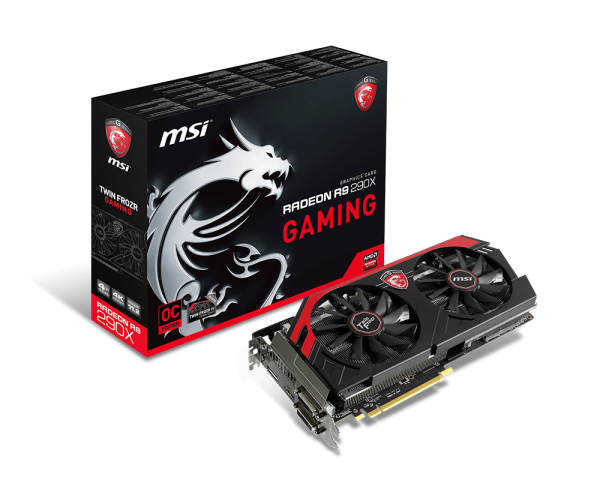
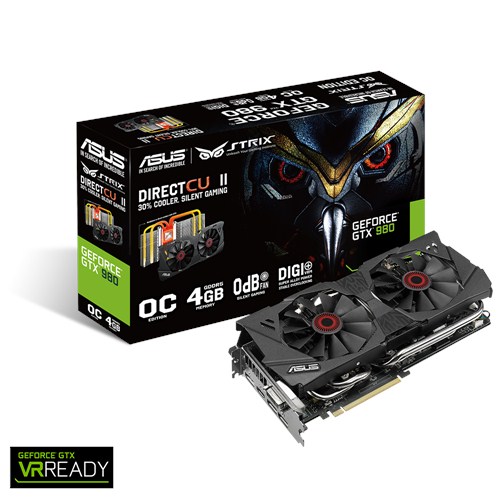
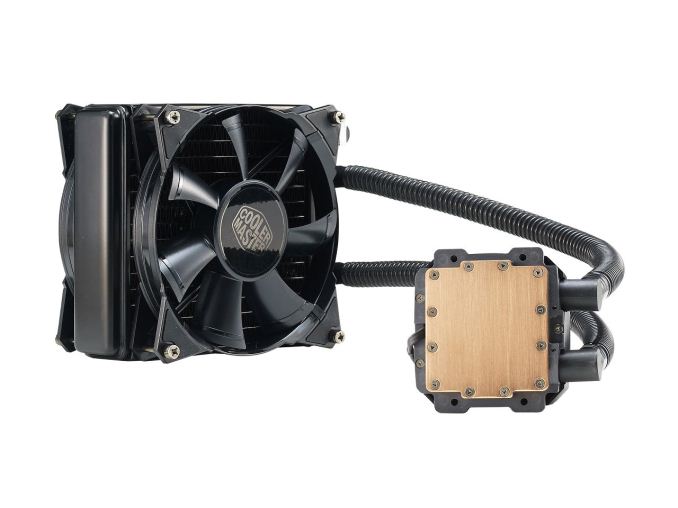
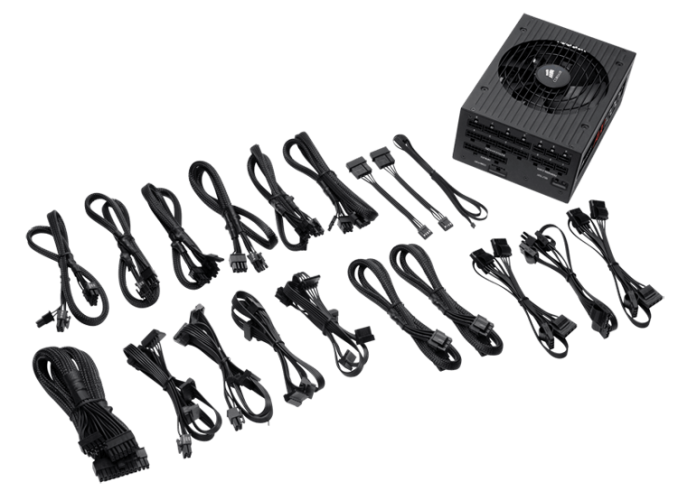


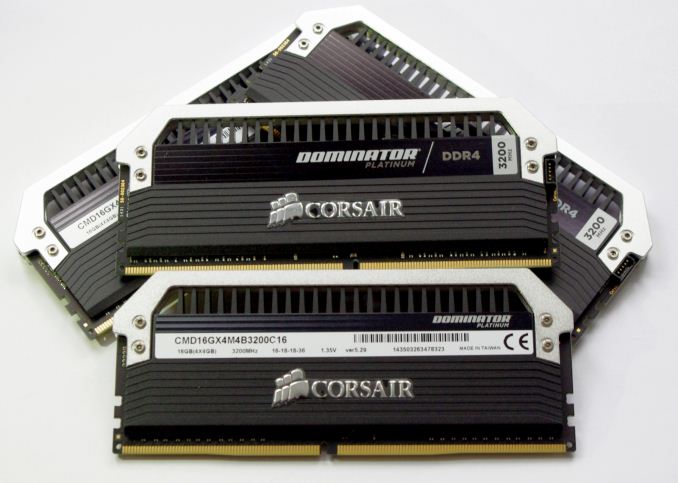








186 Comments
View All Comments
CaedenV - Friday, February 3, 2017 - link
Seems to me you only hit the CPU wall when dealing with multiple GPUs. For most games, with a single GPU, and i3 is plenty. Considering an i3 does not have enough PCIe lanes to support multiple GPUs this is a rather moot point.Aerodrifting - Saturday, February 4, 2017 - link
Like I said, You don't play any CPU demanding games so you have no right to make those ridiculous comments. Take battlefield 1 for example, Good luck in a 64 player map with i3.Michael Bay - Saturday, February 4, 2017 - link
>plays bf1>blabs about rights
You`re like a perfect example.
Aerodrifting - Saturday, February 4, 2017 - link
Nice trolling, loser.I am simply making a point: There are tons of games can bottleneck i3, Battlefield 1 is just one example, Stop lying to others "i3 can game just fine like i7 etc" it's very misleading and misinformed.
fanofanand - Sunday, February 5, 2017 - link
Considering the length of time Dr Cutress has been reviewing CPUs and gaming, any notion that he is not fit to be reviewing gaming CPUs is absurd.Aerodrifting - Sunday, February 5, 2017 - link
The notion of someone who is good at theorycraft reviews must be an expert at knowing gaming PC is absurd. 1 min of benchmark run in single player mode suddenly makes you an expert at gaming computer? Give me a break.BrokenCrayons - Thursday, February 9, 2017 - link
If you doubt the validity of the claims made in these articles in spite of the years of experience the writers have AND the supporting evidence of their work, then its rather odd you'd read any of these reviews at all. We can infer from your responses that you feel insecure about your purchase decisions, feel compelled to defend them aggressively, and that you're dismissing the evidence at hand even though you personally find it useful so you can justify the defensiveness -- more to yourself than others here because honestly, why should the opinions ruffle your feathers if there's genuinely no doubt in your mind that you feel you're as correct as you claim?Aerodrifting - Saturday, February 11, 2017 - link
Nice job coming up with such rhetoric yet no concrete evidence in your argument. I do NOT DOUBT the validity of the claims, I KNOW they are WRONG for a fact. Your reviewers do reviews for the sake of results from incomplete tests and benchmarks that can not represent real life results, Therefore the conclusion is wrong. I have been playing video games and playing around with hardware when you guys were playing with sand, Before this website is even established, Yet you want to talk about "years of experience"? I am not defending anything, I am simply pointing out you are wrong and you are misleading people, You are just butthurt because finally someone is having a different opinion and they are actually right.You want evidence? Let's save the rhetoric and go straight to facts, There are games that can severely bottleneck i3 or even i5, Battlefield is just one of them. Doesn't matter what video card you use, Join a 64 player game and you can see your CPU usage go over 90% and game starts stuttering on i3 / i5.
Ratman6161 - Friday, February 3, 2017 - link
"there will be a time where a Core i3 based CPU will match the performance of the older Core i7-2600K"Maybe, but not today! I'm still patting myself on the back for my purchase of the i7-2600K back in the spring of 2011. My first computer ran an 8088 and for every computer I owned weather off the shelf or self built from then until 2011 left me constantly on the upgrade treadmill looking for more speed . But with the 2600K I finally hit good enough (other than adding more RAM and replacing spinning disks with SSD's along the way). While its fun to read about the new stuff I don't really see myself upgrading again until either the CPU or (more likely) the motherboard give out.
CaedenV - Friday, February 3, 2017 - link
Yep! I have upgraded the ram several times, the GPU a few times, and moved from HDD to SSD, all of which have kept my 2600 very happy.What is going to get me to change over is going to be the motherboard level improvements. I cant get a much faster GPU without hitting a PCIe2 bottleneck. NVMe, while impractical (real world tests show little to no improvement), has me drooling for an upgrade. 4-10gig Ethernet is going to be more and more popular going forward. DDR4 is finally maturing to a point where it is actually better than DDR3. All new devices run USB-C, and my piddly 4 USB3 ports can't do them all, and certainly not at full speed.
It is literally everything around the CPU that is slowly making me want to upgrade, not the CPU itself. But even these improvements need another year or two to bake before I am really thinking about an upgrade. I am just unfortunately very happy with what I have, and I have one more GPU upgrade (looking forward to something like a GTX1170) before I will really need a new system.
Who knows, this might be my last 'real' PC. In a few years it may make more sense to have a central gaming server that runs all the games, and then stream them to an end-user PC that is no more powerful than a cell phone.... or just dock my cell phone.